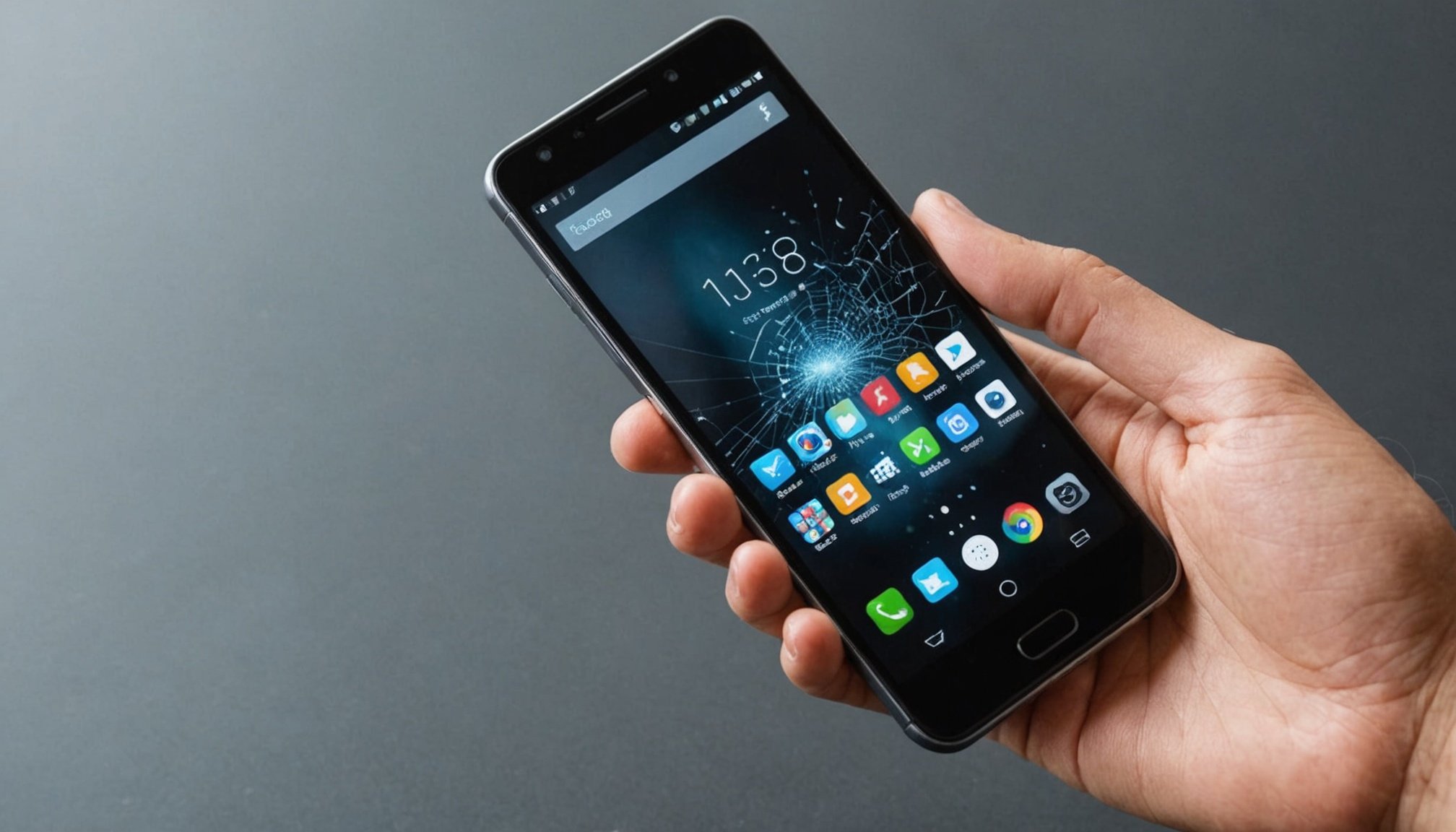Importance of Protecting Your Smartphone Screen
Ensuring screen protection is essential for maintaining your smartphone’s durability and preventing damage. Common screen damages include cracks, scratches, and shattered displays, often resulting from accidental drops or sharp objects. Repairing these damages can be costly, sometimes nearing the price of a new device. Hence, investing in preventive measures is both a practical and economical choice.
Neglecting screen protection can lead to more than just aesthetic issues. Screens with significant damage can impair touchscreen functionality, making everyday tasks challenging and frustrating. Additionally, compromised screens might hinder visibility, especially in sunny conditions, thus affecting your device’s usability.
Topic to read : Exploring smartphone addiction: impact and effective management strategies
Maintaining a scratch-free screen not only preserves your phone’s appearance but also enhances its resale value. When kept in pristine condition, a smartphone is more appealing to potential buyers or trade-ins. Moreover, a clear, undamaged screen ensures you enjoy an optimal viewing experience, crucial for media consumption and productivity tasks.
In summary, focusing on smartphone durability through effective screen protection is a wise decision. By proactive measures, you safeguard not only the phone’s functionality but also your digital peace of mind.
Also read : How to tell when it’s time for a smartphone upgrade: key indicators you shouldn’t ignore
Types of Screen Protectors
Screen protectors are essential for safeguarding your device. Understanding the types of screen protectors helps you make informed choices. They primarily come in three forms: tempered glass, plastic film, and liquid screen protectors, each with its unique advantages.
Tempered Glass Protectors
Tempered glass protectors offer strong resistance against scratches and impacts. Known for their clarity and smooth touch, these protectors are ideal for maintaining an authentic feel of your smartphone screen. However, they add noticeable thickness, which some users may find less appealing. Brands like Spigen and JETech are highly recommended for their effectiveness.
Plastic Film Protectors
Plastic film protectors provide a thinner option, ideal for those who prefer a lighter feel. They are typically more affordable but offer less durability compared to tempered glass protectors. They are best suited for minor scratch prevention rather than impact resistance. Leading brands include Tech Armor and amFilm.
Liquid Screen Protectors
Liquid screen protectors are an innovative option, offering invisible scratch resistance. While they do not protect against shattering like other types, they help maintain screen clarity without altering thickness. However, their application can be tricky, and brands like QMADIX often receive praise for convenience.
How to Properly Install Screen Protectors
Proper screen protector application is key to ensuring its efficiency in safeguarding your device. The process starts with creating an ideal installation environment: a clean, dust-free room with minimal air movement. Follow this step-by-step guide for bubble-free installation:
- Clean the screen: Use a microfiber cloth and an alcohol wipe to remove fingerprints, dust, and oils. Ensure the screen is dry before proceeding.
- Align the protector: Hold the screen protector above your phone’s screen and align it carefully to ensure all cutouts match.
- Peel the backing: Slowly peel off the backing layer, taking care not to touch the adhesive side.
- Apply the protector: Gradually lower the screen protector onto the phone screen. Start from one edge and use a credit card or squeegee to smooth out bubbles as you go.
- Final adjustments: If bubbles persist, gently lift the edge nearest the bubble and reapply.
Avoid these common mistakes: applying the protector in a dusty environment, rushing the process, or misaligning the protector. These tips ensure your screen protector installation prolongs your smartphone’s longevity.
Smartphone Cases for Added Protection
When it comes to enhancing smartphone protection, cases play a crucial role alongside screen protectors. Smartphone cases come in various types, each offering different levels of safeguarding and style. Rugged cases provide robust protection, ideal for those prone to drops or in demanding environments. They often include shock-absorbing features and reinforced corners for extra durability. Conversely, slim cases offer a more lightweight and sleek design, prioritising aesthetics and portability while still providing a moderate level of protection.
Cases are not just for decoration; they serve as an essential barrier against damage. By combining both a screen protector and a case, your device gains comprehensive protection against various incidences, from accidental drops to everyday wear and tear. Notable brands like OtterBox and Spigen are recommended for offering reliable and effective case options.
When choosing a case, consider your daily environment and how you typically handle your phone. A balance between protection level and personal style can make all the difference in ensuring your smartphone remains in excellent condition for longer. Prioritising a case that complements your screen protector will effectively extend your device’s overall lifespan.
Proper Handling and Storage Techniques
Adopting best practices for smartphone handling and storage tips can significantly reduce damage over time. It is crucial to avoid holding your device by the screen as this can leave smudges and fingerprints that may obscure visibility and lead to potential slips. Instead, hold your smartphone by its edges, especially when using it one-handed. Utilizing grips or pop sockets can also offer additional support and minimise the risk of accidental drops.
Safe storage habits are essential to prevent scratches and other damages. Always place your phone face-up on flat, clean surfaces when not in use. Avoid keeping your phone in the same pocket or bag compartment as sharp objects like keys or coins. This simple separation guards against unintended scratches and dents.
Maintaining a clean and dust-free environment is also vital. Regularly dusting and cleaning the areas where you commonly use or store your smartphone can prevent the buildup of dirt and debris that can scratch your screen over time. A little mindfulness can go a long way in preserving your device, ensuring it remains functional and aesthetically pleasing.
Cleaning and Maintenance Practices
Recognising the significance of screen cleaning can ensure your smartphone remains in excellent condition. First, select appropriate cleaning materials like microfiber cloths and alcohol-free cleaning solutions. These materials effectively remove fingerprints, dust, and grime without causing damage or leaving residues. For tough smudges, consider using a lightly dampened cloth, but avoid excessive moisture.
To maintain optimal performance and prolong your phone’s lifespan, establish a frequency of cleaning. Ideally, a weekly clean suffices to preserve clarity and reduce microbial build-up. However, if you frequently expose your phone to dirt or fingerprints, consider more regular cleaning sessions to maintain a pristine display.
Regular maintenance tips enhance the longevity of your screen protector. Inspect your protector periodically for scratches or peeling edges, which can compromise protection. Replace it promptly if it’s worn or damaged. These straightforward practices not only extend the life of your protector but also your smartphone.
Following these maintenance strategies aids in maximising your device’s durability. With proper care, you ensure your phone’s screen and protective measures continue to function effectively, offering peace of mind and a consistently pleasant user experience.
Alternatives to Screensaver Technology
In the realm of screen protection, advanced technologies are revolutionising smartphone durability. Traditional protectors like tempered glass and film offer effective solutions, but emerging tech alternatives promise enhanced protection. These innovative solutions cater to users seeking cutting-edge options.
One burgeoning technology is electrochromic glass that changes opacity with electrical signals. While still in development, it potentially provides visual screen protection by minimising display exposure when not in use. Another innovation is self-healing materials, which automatically repair minor scratches and maintain screen integrity with minimal user intervention.
Comparing these methods, traditional screen protectors focus on preventing physical damage from drops or impacts, while these advanced solutions aim to protect the screen’s functional and aesthetic qualities over time. As technology progresses, the combination of both traditional and novel strategies could redefine screen protection.
Keeping an eye on future trends, these innovative solutions are being tested across various industries and may soon become viable for widespread consumer use. By embracing these advancements, users can ensure their smartphones remain in optimal condition, benefiting from increased longevity and enhanced screen durability.











